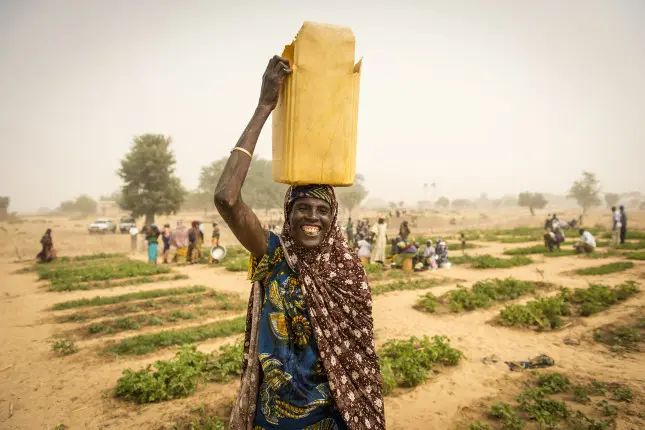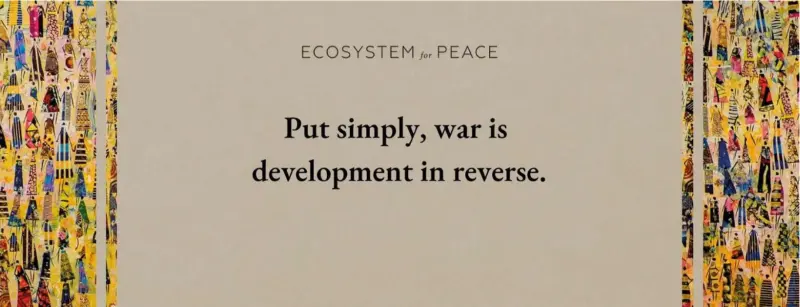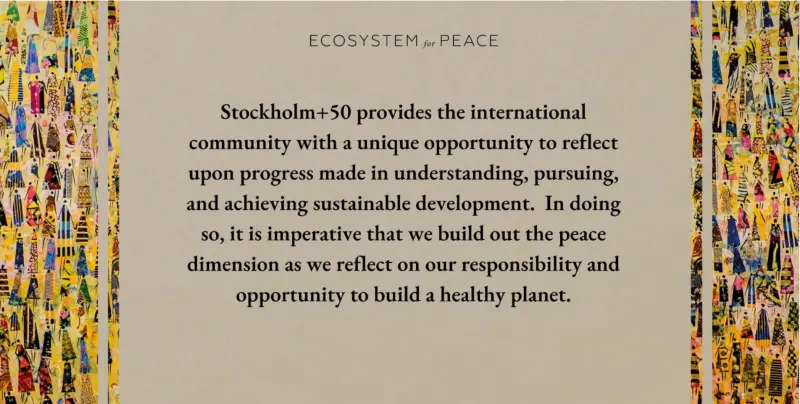From the beginning, the concept of sustainable development has emerged and been shaped in the context of armed conflict. In 1972, at the UN Conference on the Human Environment (in Stockholm) occurred as the Vietnam War was scaling down. In his opening address to the 1972 Conference, Swedish Prime Minister Olof Palme criticized at length the tactics of armed forces that harmed the environment. Principle 26 of the Stockholm Declaration provided that: “Man and his environment must be spared the effects of nuclear weapons and all other means of mass destruction. States must strive to reach prompt agreement, in the relevant international organs, on the elimination and complete destruction of such weapons.” The UN Secretary-General called for “new means of dealing with environmental conflicts,” and state delegations highlighted the linkages between the environment, conflicts, repression, arms, and armed forces.
Twenty years later, the 1992 Rio Earth Summit convened in the aftermath of the Cold War and the 1990–91 Gulf War. While the framing of sustainable development emphasized three dimensions — environmental, economic, and social — peace and conflict featured in the key documents coming out of the Earth Summit. Principle 24 of the Rio Declaration provided that “Warfare is inherently destructive of sustainable development. States shall therefore respect international law providing protection for the environment in times of armed conflict and cooperate in its further development, as necessary.” Agenda 21 (the Blueprint for Sustainable Development) sought to identify, prevent, and resolve conflicts over water, land, and other resources, while also calling for “measures … to address, in times of armed conflict, large-scale destruction of the environment that cannot be justified under international law.” Moreover, the Rio Conventions — and particularly the Convention on Biological Diversity and the Convention to Combat Desertification — have undertaken initiatives linked to peace (including the Peace and Biodiversity Dialogue Initiative and the Peace Forest Initiative).
Twenty years after that, the international community at Rio+20 “reaffirm[ed] the importance of freedom, peace and security” to sustainable development and recognized that “Countries in situations of conflict also need special attention.” Rio+20 propelled the development of the 2015 Sustainable Development Goals, which — in SDG 16 — incorporated peace as a cross-cutting goal.
Where do we stand now?
Put simply, war can be described as development in reverse. It is also clear that there are important security dimensions of environmental management and climate change, and vice versa. While remaining mindful of not unnecessarily securitizing the environment, recognizing these interconnections is critical. More than 14 percent of UN Security Council Resolutions have mentioned natural resources or the environment. Revenues from diamonds, timber, and other natural resources have financed and fueled more than 35 major armed conflicts (i.e., with more than 1,000 battle deaths). Experiences in dozens of countries and thousands of communities have shown that peace is an essential dimension of sustainable development and that natural resource management and disaster risk reduction can actually act as a bridge to bring divided communities together around issues of common concern. Today, the war in Ukraine — which is causing horrific human suffering, wreaking environmental damage, and undoing decades of economic growth — provides an unfortunately timely reminder of the importance of peace to sustainable development.
Aside from some general principles in the Stockholm and Rio declarations and SDG 16 (which has no targets or indicators directly related to peace), however, the peace dimension of sustainable development is woefully underdeveloped. While biodiversity and fragility hotspots increasingly overlap, green finance to help tackle the triple planetary crisis of climate change, pollution and biodiversity loss still struggles to reach the most conflict-affected contexts. Fragile states average just $8.8/person in climate finance from vertical funds, compared to $161.7/person for non-fragile states. The most recent IPCC report reaffirmed the importance support for climate-sensitive economic activities in fragile states.
Stockholm+50 provides the international community with a unique opportunity to reflect upon progress made in understanding, pursuing, and achieving sustainable development. In doing so, it is imperative that we build out the peace dimension of sustainable development. Much can be learned from the emerging field of environmental peacebuilding. Working at the intersection of environment, conflict, and peace, this new field offers approaches and lessons that can support the integration of peace into sustainable development.
We would like to highlight four key opportunities for integrating peace into sustainable development.
First, environmental and development organizations and financers should review their policies, procedures, and practices to strengthen and fund conflict-sensitive programming. Development of conflict-sensitive policies and guidelines is often an initial measure; equally important, is a subsequent focus on achieving conflict-sensitivity in practice. Details in funding modalities matter. Small changes at that level can make a tremendous difference on the ground to ensure programs are able to adapt to their context. Policies governing financing of environmental, nature conservation, and climate projects should integrate a conflict lens into their funding criteria, financial norms, and safeguards, for example, to ensure that they are not creating or fueling conflicts. Programming should strengthen equitable natural resource governance and conflict resolution mechanisms and recognize indigenous knowledge. Funding conflict analysis and stakeholder engagement as part of project inception phases can be a game-changer in achieving environmental objectives in fragile contexts. Moreover, green financing could identify and capitalize on peace co-benefits whenever possible. It is also necessary to hire and train staff on conflict-sensitivity and more broadly on how to meaningfully integrate conflict and peace considerations into environmental, conservation, and climate programming and financing. Local-level solution design, participatory monitoring mechanisms, and consistent impact assessment methods should also be prioritized to respect local rights, improve effectiveness, and prevent and manage conflict.
Second, environmental and development programs should look for entry points to enhance and finance peace. These may be substantive (for example, by building peace parks or employing ex-combatants in reforestation efforts). At least as important are procedural entry points, where shared interests create opportunities for groups to inclusively cooperate and build bridges. At the institutional level, community building around the peace co-benefits of climate finance can align the efforts of vertical climate funds and peace and security experts — two major but otherwise siloed stakeholder groups. At the project or community level, cooperation on water security, livelihoods, disaster risk reduction, and other environmental challenges can strengthen mutual understanding and bonds.
Third, it is necessary to strengthen the monitoring and evaluation (M&E) of projects and programs that integrate peace into sustainable development. It is important, of course, that there is financial accountability. At least as important, though, is the opportunity to learn from the projects and improve future programming, including by helping to reduce negative, unexpected impacts (such as fueling violent conflict).
Fourth, the international community should strengthen peace-related targets and indicators for environmental policy frameworks (even if it might be too late to add SDG targets and indicators) and ensure that they are applied to sustainable development programming. Such targets and indicators would be beneficial to understanding and addressing the underlying drivers of environmental conflict and insecurity. Indicators could track, for example, battle-related deaths; mentions of peacebuilding in National Adaptation Plans; climate finance flows with peace- and security-related objectives; number of ex-combatants, conflict-affected populations, communities at risk of recruitment, etc. being engaged in environmental programming; number of peacebuilding organizations involved in design, monitoring, implementation, and evaluation of environmental programming; and natural capital and GHG equivalent losses due to conflict or unrest.
Stockholm+50 may not be the place where such measures are adopted. But it can — and should — be the place where the international community recognizes the importance of peace to sustainable development and starts a process to more seriously and deliberately incorporate peace into sustainable development for the health and prosperity of our planet.
This blog is a contribution to a short series on opportunities for peace at Stockholm+50. To learn more about Stockholm+50, please visit https://www.ecosystemforpeace.org/stockholm50. Join us in Stockholm on 31 May for discussion on Making peace with nature: Environmental peacebuilding for sustainable development.
Source
Image Credit: New Security Beat, Ecosystem for Peace
Tags: Environmental Peacebuilding



